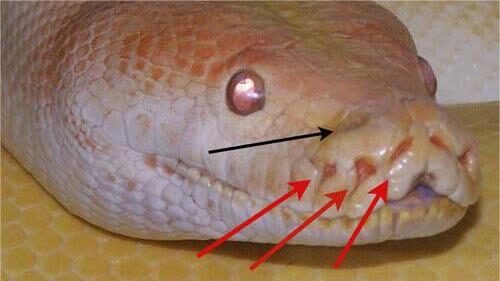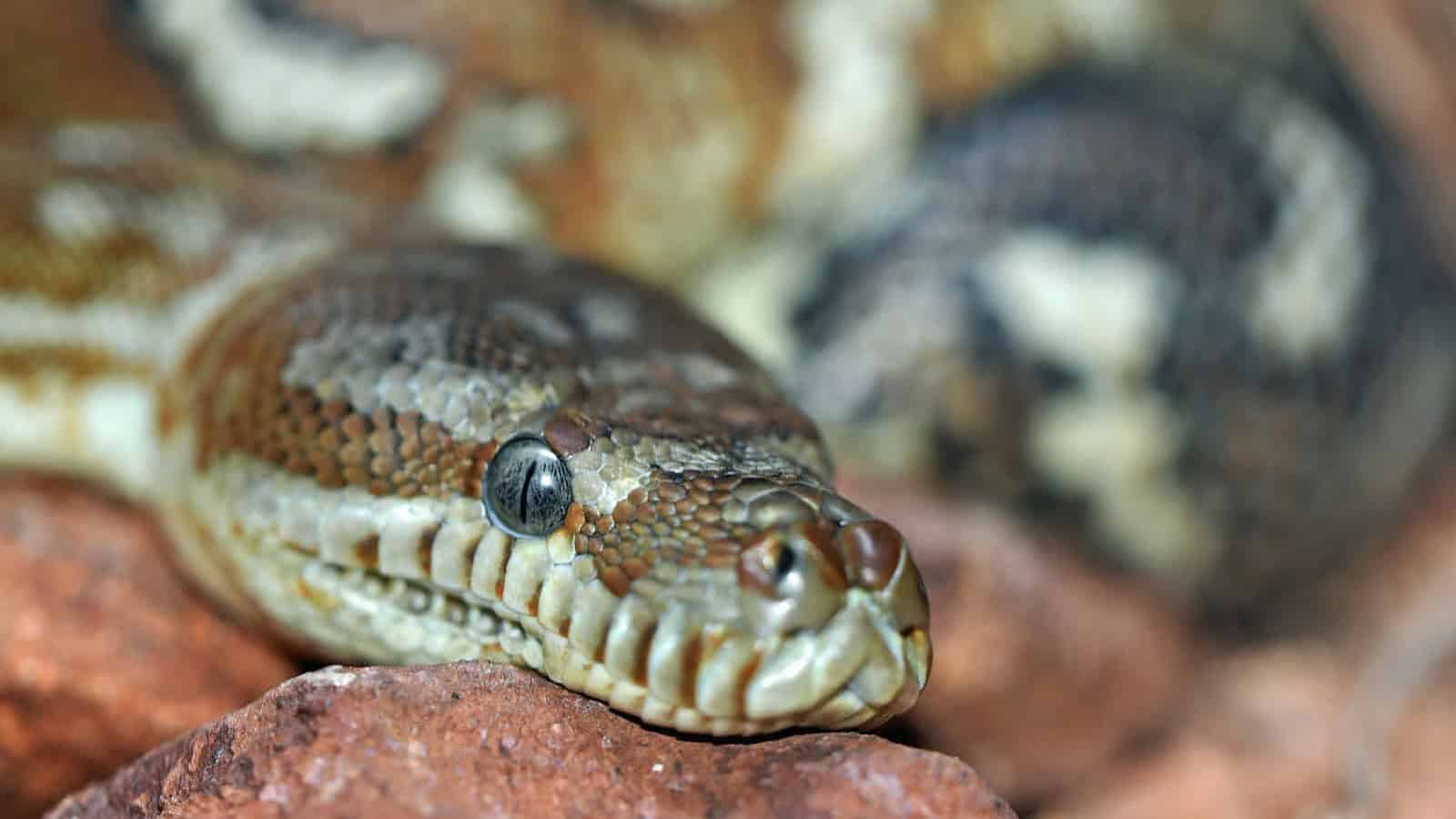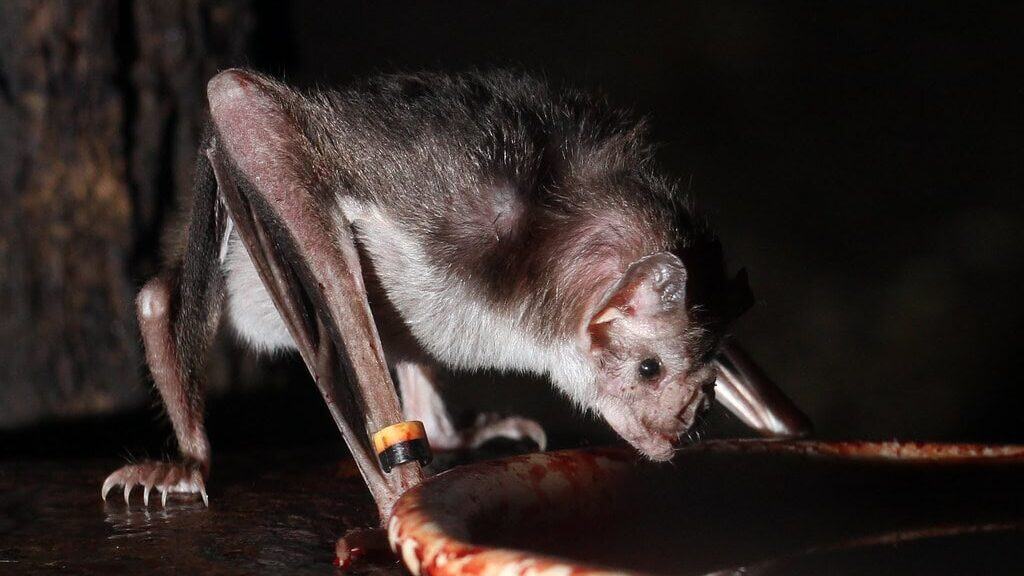In the pitch-black darkness where most predators would be rendered helpless, certain snake species thrive as efficient nocturnal hunters. Their secret weapon isn’t the keen eyesight that falcons possess or the acute hearing of owls, but rather a remarkable ability to “see” heat. This specialized sensory system allows these reptiles to detect prey with astonishing precision when visual cues are absent. Through millions of years of evolution, some snakes have developed specialized organs that can detect infrared radiation—essentially allowing them to visualize the body heat of potential meals. This fascinating adaptation has made snakes among the most successful night hunters in the animal kingdom, capable of striking with deadly accuracy in complete darkness.
The Remarkable Heat-Sensing Organs

The foundation of a snake’s heat vision lies in specialized organs called pit organs. These remarkable structures are most developed in pit vipers (such as rattlesnakes, cottonmouths, and copperheads) and certain boas and pythons. In pit vipers, these organs appear as distinctive pits between the eye and nostril on each side of the head, giving this family its common name. These pits contain a membrane that’s extraordinarily sensitive to infrared radiation—the heat energy emitted by all warm-blooded animals.
What makes these pit organs truly exceptional is their sensitivity. Research has shown that some species can detect temperature differences as small as 0.003 degrees Celsius—far more sensitive than any human-made infrared detector of similar size. This incredible sensitivity allows snakes to detect the body heat of potential prey from up to one meter away, providing them with crucial information about location, size, and even the metabolic rate of their target.
The Science Behind Infrared Detection

The mechanism behind this thermal sensing is fascinating. Within the pit organ’s membrane are thousands of specialized nerve endings containing TRPA1 channels—heat-activated ion channels that generate electrical signals when exposed to infrared radiation. When infrared radiation (heat) from a warm-blooded animal reaches the pit membrane, it causes these channels to open, triggering nerve impulses that travel to the snake’s brain. Unlike human-made thermal imaging that requires complex electronics, the snake’s system operates through this elegant biological mechanism.
Scientists have discovered that this information is processed in the snake’s optic tectum—the same region that processes visual information. This means that snakes essentially “see” heat, creating a thermal image that complements their regular vision. This dual-processing system allows the snake to create a more comprehensive picture of its surroundings, particularly valuable when hunting in low-light conditions. The snake’s brain effectively overlays thermal information with visual data, creating a multi-sensory representation of potential prey.
Pit Vipers: Masters of Thermal Detection

Among all heat-sensing snakes, pit vipers possess the most sophisticated infrared detection system. The facial pits of rattlesnakes, copperheads, and other pit vipers function similarly to pinhole cameras. Each pit has an opening that allows infrared radiation to enter and strike the heat-sensitive membrane inside. The position of the pit on either side of the head provides directional information, helping the snake locate the source of heat with impressive accuracy. This stereoscopic heat vision allows pit vipers to construct a three-dimensional thermal map of their environment.
The evolutionary advantage this provides cannot be overstated. A rattlesnake, for instance, can accurately strike at prey in complete darkness, locating the optimal target area (typically the warmest part of the animal, corresponding to vital organs) with deadly precision. This adaptation has made pit vipers particularly successful in environments where nighttime hunting offers advantages, such as avoiding larger predators or targeting nocturnal rodents that might otherwise escape detection.
Pythons and Boas: Alternative Heat-Sensing Systems

While pit vipers have the most famous heat-sensing system, certain pythons and boas have evolved their own version of infrared detection. Instead of the large facial pits found in vipers, these snakes possess a series of smaller labial pits or scales along their upper and lower lips. Each of these contains heat-sensitive tissue that functions similarly to the pit viper’s organs, though typically with somewhat reduced sensitivity. The reticulated python, for example, has approximately 15 heat-sensitive labial scales on each side of its mouth.
This different arrangement of heat sensors provides pythons and boas with a wider field of “thermal view” compared to pit vipers, though with less precision in pinpointing exact locations. This trade-off suits their hunting strategy, which often involves ambushing prey and constricting it rather than delivering a precise venomous strike. The thermal information gathered helps these snakes not only locate prey but also identify the size of the animal, allowing them to select appropriately sized targets and avoid wasting energy on prey too large to consume.
Hunting Strategies Empowered by Heat Vision

Heat vision fundamentally transforms how equipped snakes hunt compared to their non-heat-sensing counterparts. Rather than relying solely on movement, scent, or visible light, heat-sensing snakes can detect stationary prey hidden in vegetation or burrows simply by sensing their body heat. This gives them a significant advantage in detecting prey that might otherwise remain perfectly camouflaged or motionless. A mouse freezing in fear, a strategy effective against many predators, remains clearly “visible” to the heat-sensing snake.
These snakes have evolved specific hunting behaviors that maximize the effectiveness of their thermal detection. Many species will assume an ambush position, remaining completely still for hours or even days, waiting for warm-blooded prey to pass within range of their heat sensors. When suitable prey is detected, the snake can calculate the precise strike trajectory based on the thermal information received, even compensating for the movement of the prey during the strike. This integration of sensory information and motor response represents one of nature’s most sophisticated predatory systems.
The Evolutionary Advantage of Heat Detection

The ability to detect infrared radiation evolved independently in pit vipers and in boas/pythons, representing a remarkable case of convergent evolution. This independent development in different snake lineages underscores just how advantageous this adaptation is for predatory success. The earliest ancestors of modern pit vipers likely developed their heat-sensing pits approximately 30 million years ago, with the adaptation being refined through natural selection as it provided significant hunting advantages.
This sensory innovation allowed these snakes to expand into ecological niches that would otherwise be inaccessible. By hunting effectively at night, heat-sensing snakes avoid competition with diurnal predators and can target nocturnal mammals that might otherwise avoid predation. Additionally, in cooler climates or seasons, the ability to detect warm-blooded prey becomes even more valuable, as the temperature differential between prey and environment increases, making warm animals stand out even more clearly against the cooler background.
Heat Vision Beyond Hunting: Predator Avoidance

While hunting represents the primary use of heat detection, this remarkable sense serves snakes in other crucial ways. Many predators of snakes, including birds of prey, mammals, and humans, emit significant body heat that can be detected by the snake’s infrared sensors. This gives heat-sensing snakes an early warning system, allowing them to detect approaching predators before they become visible, providing crucial time to escape or adopt defensive postures.
For venomous species like rattlesnakes, this early detection system allows them to prepare defensive strikes or warning behaviors (such as rattling) before a potential threat gets too close. This helps the snake avoid unnecessary confrontations while still maintaining an effective defense. In some cases, heat-sensing snakes may even use their infrared detection to find suitable hiding places by identifying areas with temperature profiles that indicate safety from larger predators.
The Limitations of Snake Heat Vision

Despite its impressive capabilities, a snake’s heat vision does have certain limitations. The most significant is range—even the most sensitive pit organs can only detect infrared radiation effectively at distances of approximately one meter. Beyond this range, the signal becomes too weak to be reliably detected. This is why heat-sensing snakes often employ ambush strategies, positioning themselves in locations where prey is likely to pass nearby, rather than actively pursuing prey over long distances.
Another limitation involves environmental conditions. In environments where ambient temperatures approach the body temperature of potential prey, the thermal contrast decreases, making detection more difficult. This is why heat-sensing snakes may be less effective hunters during particularly hot weather or in hot environments where the temperature differential between prey and surroundings is minimal. Additionally, prey animals that can regulate their surface temperature, such as certain insects, may be more difficult for heat-sensing snakes to detect compared to mammals and birds with consistent thermal signatures.
Research and Scientific Understanding

Scientific understanding of snake infrared detection has advanced significantly in recent decades. Early experiments in the 1970s established the remarkable sensitivity of these organs, but it wasn’t until the early 2000s that researchers identified the specific molecular mechanism—the TRPA1 ion channel—responsible for converting infrared radiation into neural signals. This discovery represented a major breakthrough in understanding how biological systems can detect radiation outside the visible spectrum.
More recent research has focused on mapping the neural pathways that process infrared information in the snake brain. Using advanced imaging techniques, scientists have traced how thermal information travels from the pit organs to the optic tectum, where it’s integrated with visual information to create a comprehensive representation of the environment. This research continues to inspire biomimetic technologies, with engineers developing infrared sensors based on the principles observed in snake pit organs that could potentially outperform conventional electronic sensors in certain applications.
Heat Vision and Climate Change Concerns

As global temperatures rise due to climate change, researchers have begun investigating potential impacts on heat-sensing snakes. The concern centers around how increasing ambient temperatures might affect the thermal contrast between prey and environment that these snakes rely upon. In regions experiencing significant warming, the reduced temperature differential could potentially make prey detection more challenging, especially during hotter seasons or times of day.
Preliminary studies suggest that some species may adapt behaviorally, shifting to more nocturnal hunting patterns when temperature differentials are greater. Others may experience range shifts, moving toward higher elevations or latitudes where thermal conditions remain more favorable for their hunting strategy. The high sensitivity of pit organs to small temperature differences provides some buffer against these changes, but significant warming could eventually impact hunting success for species that cannot adapt quickly enough to changing thermal landscapes.
Comparing Snake Heat Vision to Other Animals

While snakes have the most well-developed infrared detection system among reptiles, they aren’t the only animals capable of sensing heat. Certain beetles in the genus Melanophila can detect infrared radiation from forest fires from distances up to 12 kilometers, allowing them to locate freshly burned areas for breeding. Some vampire bats possess heat-sensitive receptors around their noses that help them locate blood vessels near the surface of their prey’s skin. These diverse examples demonstrate how heat detection has evolved independently multiple times across the animal kingdom.
What makes snake infrared detection particularly impressive is its integration with other sensory systems and its precise spatial resolution. Unlike most other heat-sensing animals that can only detect the presence of heat sources, snakes can create a detailed thermal “image” of their surroundings. This allows for precise targeting rather than simply detecting that heat is present. The combination of sensitivity, spatial resolution, and integration with other senses makes snake heat vision one of nature’s most sophisticated sensory adaptations for nocturnal predation.
The ability of certain snake species to effectively “see” heat represents one of nature’s most fascinating sensory adaptations. This specialized infrared detection system provides these reptiles with an extraordinary advantage when hunting in darkness, allowing them to locate and strike warm-blooded prey with remarkable precision when other predators would be effectively blind. The independent evolution of heat-sensing organs in different snake lineages underscores just how valuable this adaptation is for predatory success. As our scientific understanding of these systems continues to advance, we gain deeper insights into the remarkable ways that evolution has shaped specialized sensory systems.
From the precisely arranged pit organs of vipers to the labial pits of boas and pythons, these infrared detection systems represent biological innovations that continue to inspire both scientific research and biomimetic technologies. In the eternal evolutionary arms race between predator and prey, the development of heat vision stands as one of the most effective adaptations for nocturnal hunting, allowing certain snakes to thrive in ecological niches that would otherwise remain inaccessible. Through this remarkable sensory capability, these snakes have earned their place among nature’s most successful and specialized nocturnal predators.
- Species Where the Father Takes Over Parenting Duties - August 17, 2025
- How Snakes Use Heat Vision to Hunt at Night - August 17, 2025
- Crows Can Recognize Human Faces - August 17, 2025

